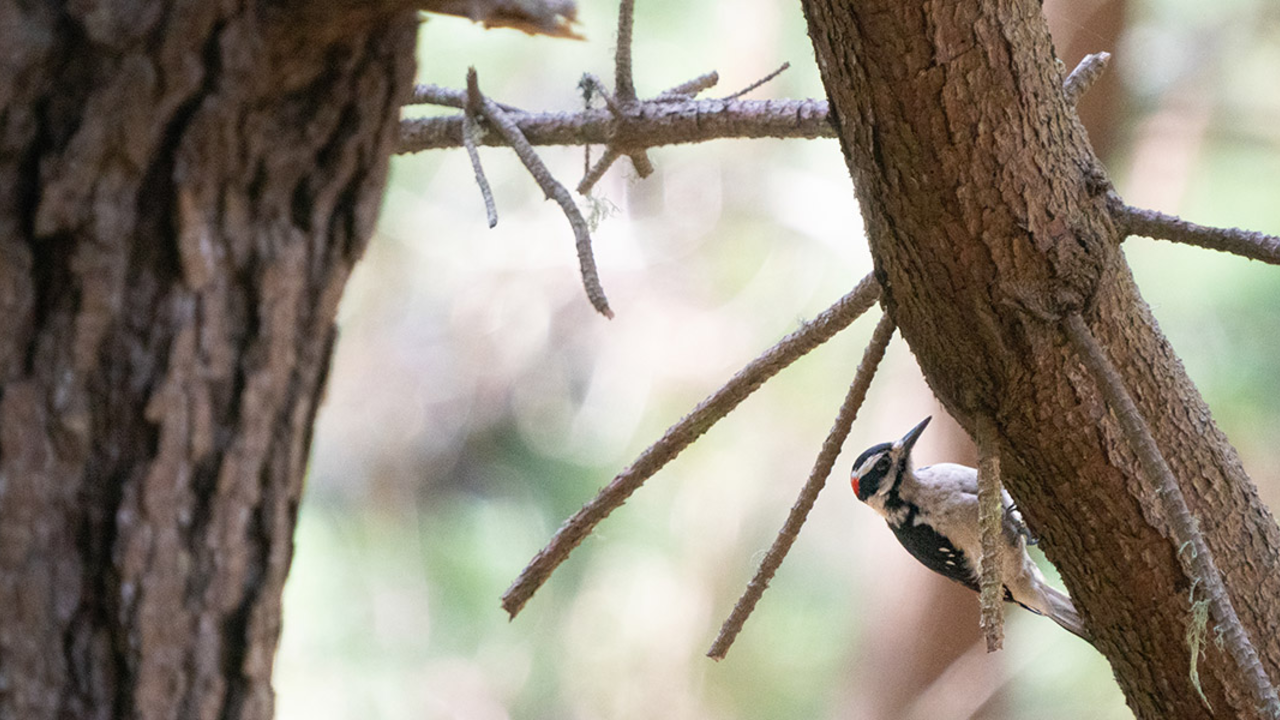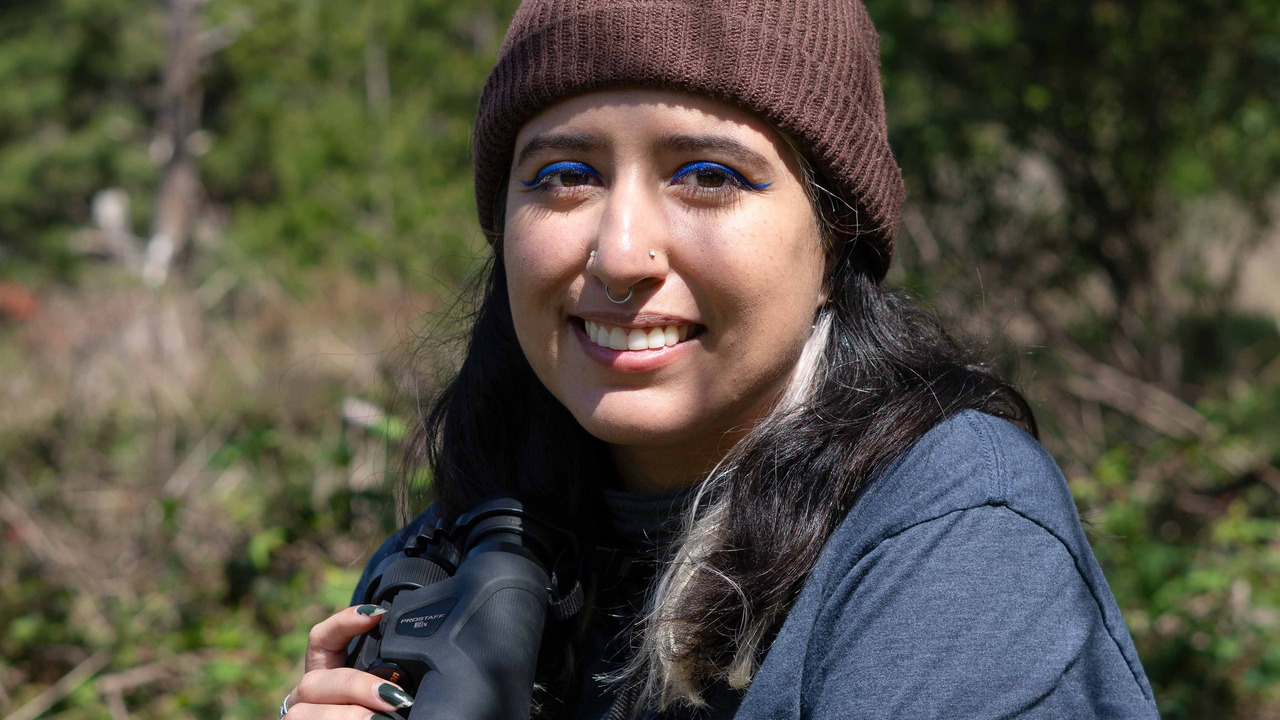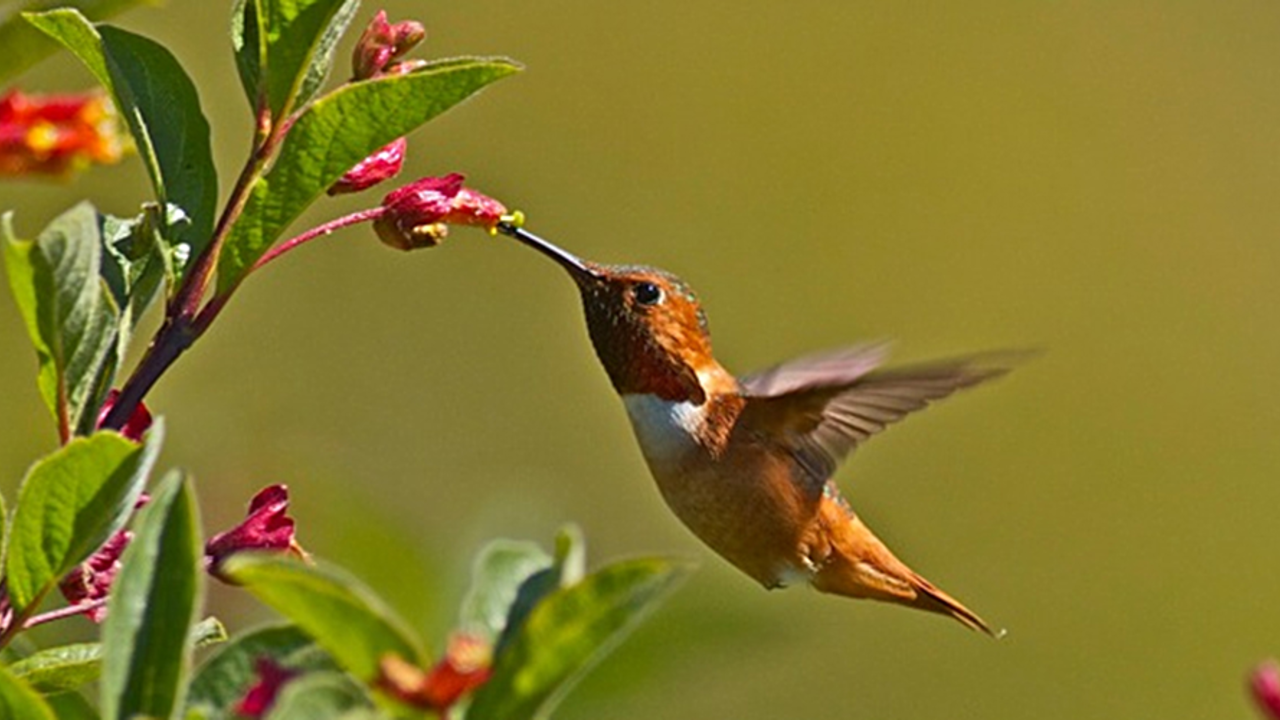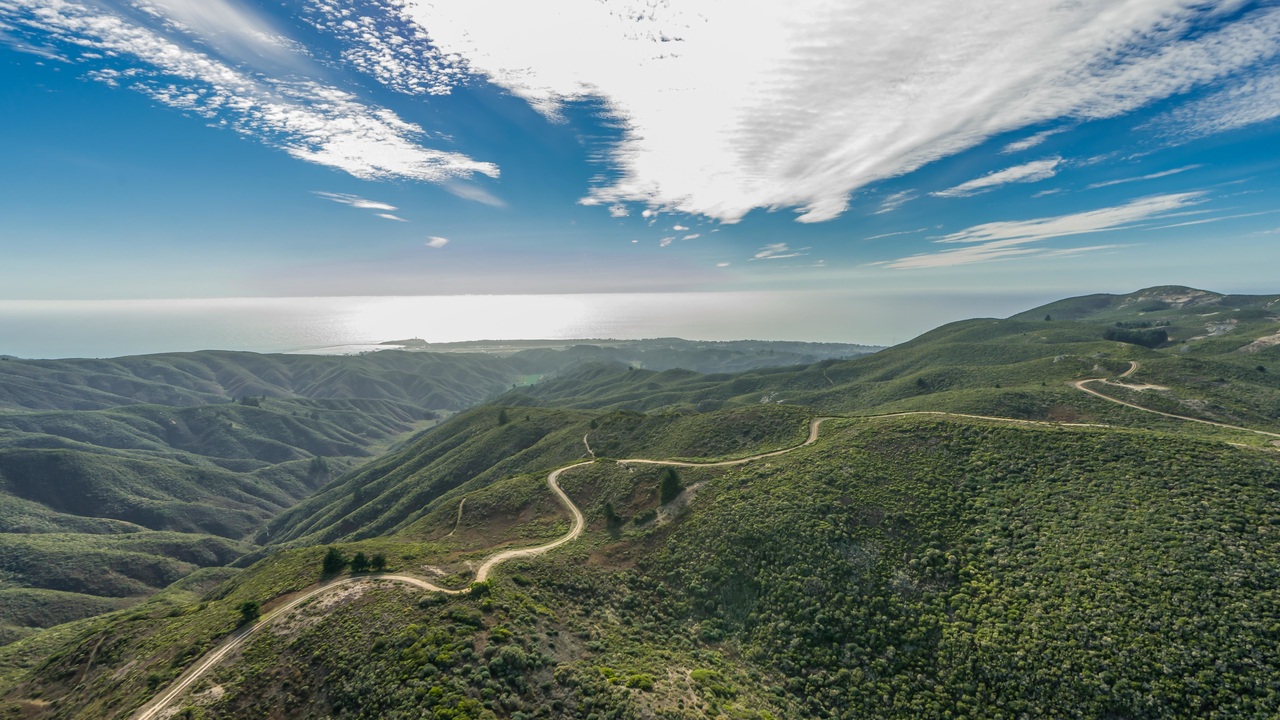How to find birds 'slowly' in national parks
Meet ornithologist Daniela Sánchez

Emily Harwitz / For the Parks Conservancy
Ornithologist and birder Daniela Sánchez stops excitedly in her tracks to observe a Chestnut-backed Chickadee perch on a swaying eucalyptus branch, call its distinctive chick-a-dee, then flit away. “It's a nice clear day with little wind, which helps," she says. "The birds are much more active when there isn't a lot of wind.” Moments before, she’d watched a Red-tailed Hawk disappear into distant trees. She adds: “Except for the raptors. Raptors love wind.”
Sánchez, who is pursuing a Master’s in Ecology, Evolution, and Conservation Biology at San Francisco State University, is a Golden Gate Bird Alliance (GGBA) member. In 2023, she was a GGBA Birding for Everyone Scholar and has returned to the program this year to serve as the fellowship mentor. Today, we're here to bird on one of the many trails of Rancho Corral de Tierra in the Golden Gate National Recreation Area. Located about 20 miles down the coast from San Francisco, Rancho is a birder’s delight. It includes nearly 4,000 acres of diverse habitat, open coastal scrub and grasslands to riparian woodlands, freshwater wetlands, eucalyptus forests, and manzanita chaparral.
At least once every few minutes, a bird flies, hops, or cavorts into view. Many of them are common Bay Area backyard birds, like White-crowned Sparrows, Dark-eyed Juncos, and Black Phoebes. In the open grassy areas, the metallic calls of Red-winged Blackbirds ring out as Purple Finches scratch in the dirt.

Many people flock to birding because they love birds' beautiful plumage, their intricate songs, or their entertaining antics. For Sánchez, it was serendipity. During her bachelor’s degree in biology, she needed one more class to graduate and the only one available was ornithology. “Before that, I wasn't really into birds,” Sánchez reflects. “They were just there and I didn't bat an eye whenever I saw a crow or anything else, a little brown bird beside me outside.” But she needed to graduate, so she enrolled. Learning about bird biology and how to interpret their behavior allowed Sánchez to start seeing birds as unique individuals with rich lives and personalities. “The lab portion of this class was basically field trips to go birding,” she says, “and I fell in love with it.”
She also fell in love with the inclusive birding community she’s now helping to build through involvement with groups like GGBA and Feminist Bird Club. “As nice as it is to go out on your own birding, sometimes you'd like some company,” she says. “And sometimes you'd like to share with someone who gets it, how cool it is that you saw X bird around.”
Though keeping a checklist is a valid way of birding for many people, Sanchez prefers to take her time with the birds she sees. Because it’s easy to encounter birds as you explore the trails, Sánchez describes the birding at Rancho as low-key, perfect for slower birding. “And although there's some tricky terrain, you can take it little by little because you don't feel like you have to hurry.” A bench along one of Rancho’s trails offers a vista across grassland to coastal scrub to the glittering Pacific Ocean—it's a great place to slow down and birdwatch. Or bird-listen. “That’s a Bewick’s Wren,” Sánchez says, after hearing the call and confirming it with the birding app Merlin Bird ID. Developed by the Cornell Lab of Ornithology, the app uses AI to listen to surrounding birds and shows real-time suggestions for who’s singing. It’s a favorite among birders and especially helpful for learning to bird by ear.
Continuing on the trail, the landscape soon transitions into a covered woodland. A tap-tap-tapping alerts Sánchez to the Northern Flicker hammering and creeping up a nearby tree, its red cap a splash of brilliant color against the umber bark. Spotting another hawk, Sánchez follows it to what turns out to be the boundary of the park, so she returns back.
For Sánchez, birding is a way to relax and escape the hustle and stress of daily life. Slowing down to notice birds and getting to know them gives her a new lens through which to see the world. “I'm much more aware of what's around me, which makes me more appreciative,” she says.
When the woods open back up to the rolling grassland, Montara Mountain to the right and the coastline in front, the view is breathtaking. It is much to appreciate indeed.


